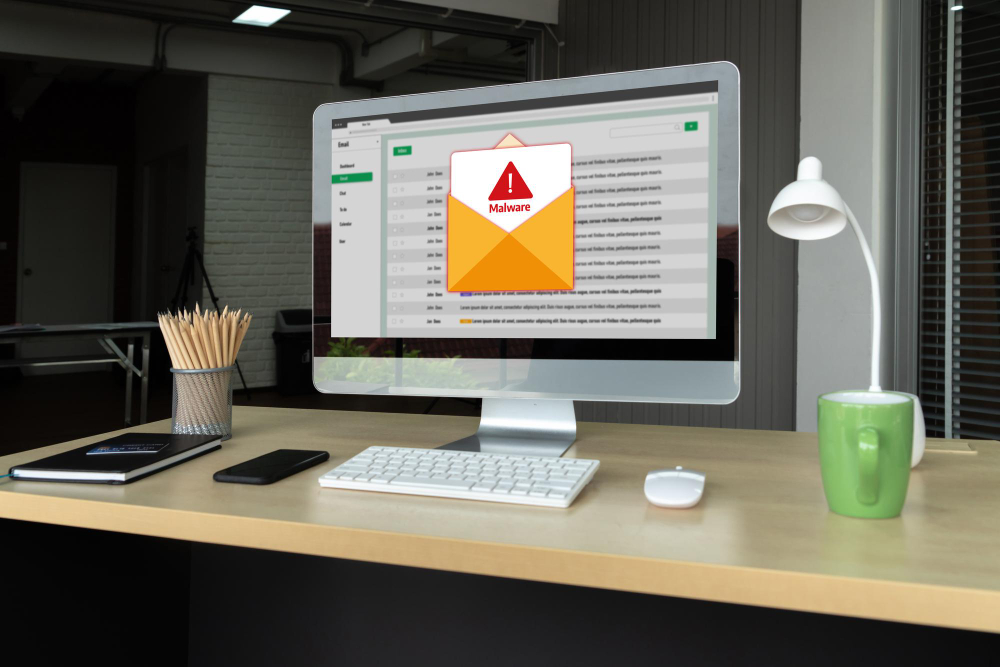Rootkits, the stealthy digital intruders lurking in our computing systems’ shadows, pose a significant cybersecurity threat. These malicious programs, designed to conceal their presence and grant unauthorized access, can wreak havoc on individual users and organizations.
This article will delve into the world of rootkits, exploring their techniques, impact, and strategies to combat these elusive threats.
What is a rootkit?

Imagine your computer is a house. Rootkits are like burglars who come in, hide in the attic, and secretly control everything you do at home. You may not realize it, but they watch your every move and can steal your valuables or even open the door to other thieves.
Rootkits are malware that hide inside your computer and take control without you realizing it. They can steal your personal information, spy on your activities, or even use your computer to attack others.
Types of rootkits

Bootloader rootkit
A bootloader rootkit is a type of malware that infects the system booting process. It replaces the original bootloader with a malicious one, thus allowing the attacker to gain control of the system even before the operating system starts. This makes it very difficult to detect and remove.
Application rootkit
An application rootkit disguises itself as a legitimate application or system process. Once installed, it can monitor user activity, steal sensitive information, or open backdoors for further attacks.
Virtual rootkits
Virtual rootkits create a virtual environment within the host operating system. They operate within this virtual space, making them harder for traditional antivirus software to detect.
Hardware or firmware rootkit
A hardware or firmware rootkit targets the system’s BIOS or firmware. Modifying the underlying hardware allows these rootkits to persist even after system reinstallation.
Memory rootkit
A memory rootkit resides in the system’s RAM. It can modify system processes and kernel functions, making it challenging to detect and remove.
Kernel mode rootkits
Kernel mode rootkits have the highest level of privilege on a system. They can modify the operating system’s core functions, making them extremely powerful and difficult to detect.
Rootkit examples

Flame
Flame is a highly sophisticated rootkit discovered in 2012, often associated with cyber espionage. Designed for large-scale data collection, it targets Middle Eastern organizations, governments, and businesses.
Flame can record audio, take screenshots, monitor keystrokes, and steal sensitive files. It spreads through local networks or infected USB drives and can evade traditional antivirus detection. Its modular design allows hackers to add features or update its functionality remotely.
Its complexity and broad scope suggest that a state most likely developed Flame, making it one of the most notorious cyber espionage tools. It serves as a clear reminder of the ever-increasing threat of advanced malware.
Necurs
Necurs is a powerful rootkit that plays a major role in spreading malware and botnets worldwide. Necurs hide in the system’s core, making its detection very challenging.
Necurs often act as a delivery mechanism for ransomware such as Locky or banking trojans. Necurs utilizes botnets to send large amounts of spam emails, enabling widespread phishing attacks.
Necurs can also turn off antivirus software and block updates to keep systems vulnerable. Active for several years, Necurs infected millions of devices globally before finally being taken down in a coordinated effort in 2020.
TDSS
TDSS, also known as Alureon, is a well-known rootkit family that reached its peak of activity around 2008-2010. It targets Windows systems, aiming to take control of infected devices and use them in botnets.
TDSS is adept at hiding its existence by manipulating system files and drivers and bypassing traditional detection tools. This allows attackers to steal sensitive data, display fake antivirus alerts, and commit click fraud by redirecting browser traffic.
The complexity of TDSS makes it a favorite tool for cybercriminals, demonstrating how rootkits can evolve into highly sophisticated threats.
ZeroAccess
ZeroAccess is a rootkit that became infamous for creating massive botnets for click fraud and cryptocurrency mining. First detected in 2011, ZeroAccess infiltrates systems through malicious downloads or exploit kits. It embeds itself in the system, making it difficult to remove.
The rootkit manipulates system processes to ensure its existence and effectively hides from security tools. ZeroAccess infected over two million devices at its peak, earning cybercriminals millions of dollars.
Rootkit Protection And Removal

Back up vital data
Before attempting rootkit removal, it’s crucial to back up your important data. This ensures you have a copy of your files in case something goes wrong during removal.
Boot up in safe mode
Booting your computer into Safe Mode can help limit the rootkit’s activity. In Safe Mode, only essential system processes and drivers are loaded, making detecting and removing the rootkit easier.
Use multiple rootkit scan tools
Employing multiple rootkit scanning tools can increase your chances of detecting and removing the malicious software. Different tools use various techniques, so using a combination can provide a more comprehensive scan.
Freeze remaining malware
If you cannot remove the rootkit fully, you can consider freezing the malicious processes. This prevents them from executing and causing further damage. However, it’s important to note that this is a temporary solution, and you should still aim for complete removal.
Advanced rootkit removal
Advanced techniques may be necessary for complex rootkit infections. This could involve using specialized tools, modifying system files manually, or even reinstalling the operating system. It’s advisable to seek help from a cybersecurity expert if you’re dealing with a stubborn rootkit.
How to stop rootkit malware from infecting your system

Scan your systems
Scanning your system regularly is one of the best ways to detect and stop rootkit infections. Use reliable antivirus or anti-malware software to perform a thorough system scan, including deeper checks for hidden files or suspicious activity.
Schedule these scans frequently to catch potential threats early before they can cause significant damage. Keep your security software up-to-date to detect and remove the latest rootkits.
Be careful of phishing attempts
Phishing attempts are a common way for rootkits to infect your system. Cybercriminals use fake emails, messages, or websites to trick you into clicking malicious links or downloading infected files. Always double-check the sender’s email address, avoid clicking on suspicious links, and verify websites before entering personal information.
Update your software
Keeping your software up-to-date is essential for preventing rootkit infections. Software updates often include security patches that fix vulnerabilities that hackers can exploit to install malware. Make sure your operating system, antivirus program, and applications are set to update automatically.
Outdated software is a prime target for cybercriminals, so keeping your software up to date will reduce the risk to your system. Please pay attention to update notifications; putting them off could expose you. Regular updates increase security and improve system performance and functionality, making your computer safer and more efficient overall.
Use advanced antivirus/anti-malware
Investing in advanced antivirus or anti-malware software is important in protecting your system from rootkits. Modern security tools use real-time detection and behavioral analysis to identify and block rootkits before they can infect your device.
Look for software with rootkit-specific detection capabilities to ensure comprehensive protection. Additionally, it enables firewalls and intrusion prevention systems to provide an extra layer of security.
Advanced tools can also automatically quarantine or remove threats, so you don’t have to worry. While no tool is perfect, using the best antivirus software significantly lowers the risk of rootkit infection and other malicious activity.
Frequently Asked Questions
Why are rootkits so dangerous?
Rootkits are like ninjas of the malware world. They hide in the shadows, giving attackers complete control over your computer without you even knowing.
This allows them to steal your passwords, banking information, emails, and anything else you do on your computer. They can even use your computer to launch attacks on others!
How are rootkits detected?
Unfortunately, rootkits are sneaky! They actively try to avoid detection. However, some signs can point to a possible infection, like unexplained system slowdowns, unknown programs running, or unexpected changes to your files. Security software with rootkit detection can also help uncover these hidden pests.
Is rootkit a virus?
Nope! While both are malicious software, rootkits are different from viruses.
Viruses typically spread by replicating themselves and attaching to other programs. Rootkits focus on staying hidden and granting access to your system. Think of a virus as a contagious sickness, while a rootkit is a secret spy.
Conclusion
Rootkits are serious threats, but don’t panic! You can keep your computer safe by understanding their dangers and taking steps to protect yourself. Back up your data regularly, use strong passwords and security software, and be cautious when downloading files.
For advanced protection and peace of mind, consider services like Fluxgate. We offer expert security solutions to protect your digital life from even the sneakiest threats.
